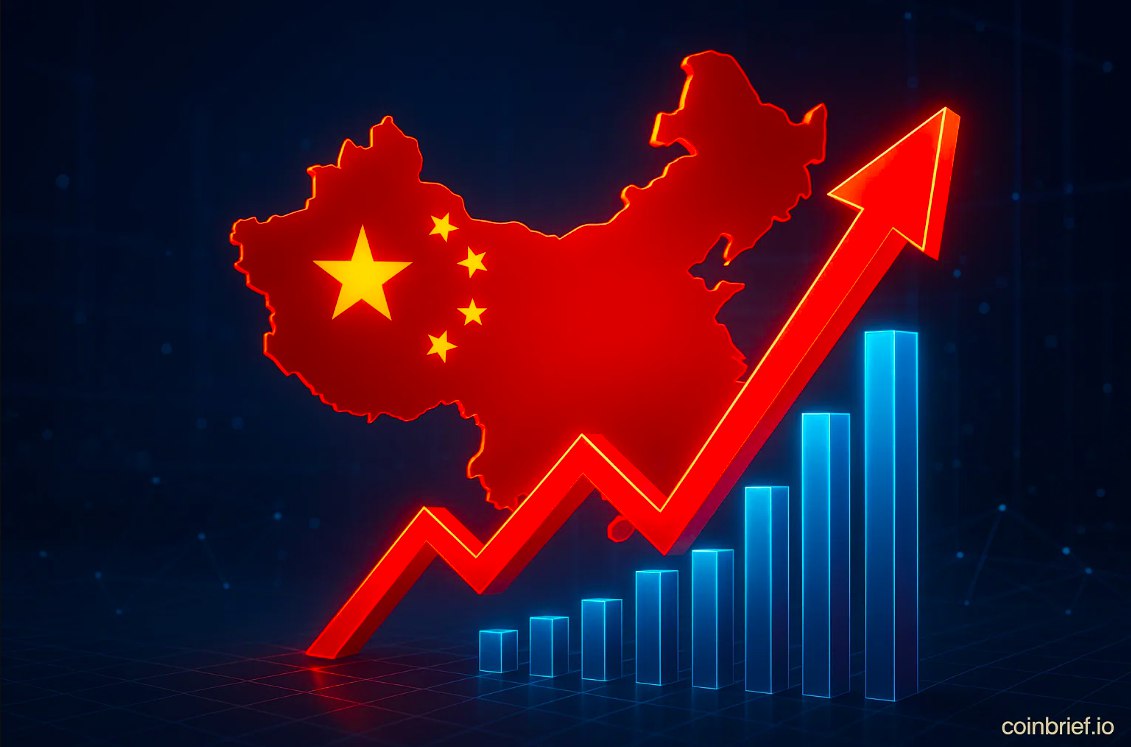- China’s exports to the U.S. fell 33% in August; overall growth weakest in six months.
- Alternative markets like EU, ASEAN, and Africa show strong export growth.
- Domestic demand remains sluggish; policymakers may cut rates to boost economy.
China’s exports to the U.S. fell sharply in August, while overall trade growth slowed to its weakest pace in six months, signaling mounting pressures from U.S. tariffs and a cooling domestic economy. Customs data show exports to the U.S. dropped 33% year-on-year, while imports from the U.S. fell 16%, highlighting the ongoing strain in bilateral trade.
Weak U.S. Demand and Trade Scrutiny
China’s overall exports in August rose only 4.4% in U.S. dollar terms, missing forecasts of 5%, and marking their lowest growth since February. Economists attribute this slowdown partly to the fading effects of last year’s high export base and the U.S.-China trade truce.
Zichun Huang, a China economist at Capital Economics, noted, “With the temporary boost from the U.S.-China trade truce fading and the U.S. raising tariffs on shipments rerouted via other countries, exports are likely to come under pressure in the near term.”
The U.S. crackdown on transshipments — rerouting Chinese goods through third countries to bypass tariffs — adds further strain, with new 40% tariffs on such shipments expected to curb exports in coming months.
Diversification Into Other Markets
Despite weakening U.S. demand, Chinese exporters have expanded into alternative markets. Exports to the European Union, ASEAN nations, and Africa rose 10.4%, 22.5%, and nearly 26% respectively in August.
“Chinese exporters have been pushing for higher market share in other countries due to weak domestic demand in China,” said Zhiwei Zhang, chief economist at Pinpoint Asset Management. Latin America also saw nearly 6% growth in shipments, reflecting Beijing’s broader strategy to reduce reliance on U.S. trade.
Domestic Challenges and Policy Response
Domestically, sluggish consumer demand and a persistent real estate slump continue to weigh on imports and economic growth. Imports grew only 1.3% in August, missing expectations. Local government trade-in programs for cars, appliances, and smartphones have been paused due to depleted funds, further dampening demand.
Economists expect Beijing to rely on modest monetary easing rather than large-scale fiscal stimulus. Goldman Sachs forecasts continued negative wholesale inflation, with the producer price index falling 2.9% year-on-year in August, while the headline CPI declined 0.2%. The People’s Bank of China may cut policy rates by up to 20 basis points to counter slow growth.
Also Read: China’s EV Surge: How BYD Is Shaping Global Car Markets
China faces a delicate balancing act, mitigating U.S. trade pressures while sustaining domestic demand and exploring new international markets. With U.S. tariffs looming and domestic consumption sluggish, the coming months will be crucial for China’s export and economic outlook.
Disclaimer: The information in this article is for general purposes only and does not constitute financial advice. The author’s views are personal and may not reflect the views of CoinBrief.io. Before making any investment decisions, you should always conduct your own research. Coin Brief is not responsible for any financial losses.




